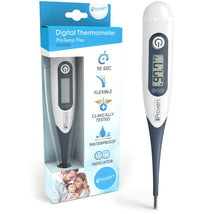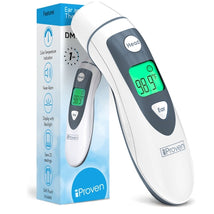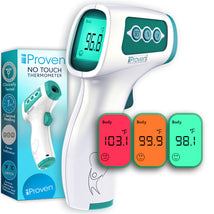Have you always wondered what a Basal Thermometer does? How does it help women get a better understanding of their cycle?
Feed your mind's curiosity and keep on reading or buy our best selling BBT-113AI basal thermometer directly on Amazon
A basal thermometer is a tool that helps you in your natural Family Planning. It measures your basal temperature body temperature also known as the temperature you attain during rest.
Tracking your basal body temperature is important, because it will give you an idea of when you are ovulating.
Also, tracking your basal body temperature will give you insights of your own unique cycle. It will give you a sense of control and empowerment, especially if you are trying to conceive!
Phases of Ovulation
Pre Ovulation
Your Pre-Ovulation phase starts on the first day of your menstruation. While you are in your pre-ovulation phase your temperature will be at its lowest, ranging between 96.F and 98F.
Note that everyone has different cycles. They may vary between 21 - 35 days. 14 days before the start of your cycle is when the ovulation takes place. The length of your pre-ovulation phase is unpredictable and will depend on several factors. Factors such as age, genes, health, behavior and birth control methods will definitely affect your cycle.
Ovulation
This is the phase when you are most fertile and it’s the perfect time to do the baby dance. Your waking temps will still be low and will only rise once ovulation has taken place.
Your fertile window is around 6 days long. Sperm can live up to 5 days while the egg can survive on its own for 24 hours. Doing the baby dance is encouraged days before your ovulation.
Post Ovulation
This is the final stage of your cycle. Your temperature will rise in the 24 hours after your ovulation. Usually, your temperature rises about 0.4F from your normal readings. This rise will be noticeable and will continue until a new cycle starts.
If the egg is fertilized, you could get a positive pregnancy test on the first day of your expected period.
How do you track your readings?
A lot of factors that will influence the results of your readings. To battle this, we’ve got some easy-to-follow tips for you.
To get accurate and consistent temperature readings, remember the following:
Interpreting your results
Taking your temperature daily can easily be a part of your routine. Learning how to interpret your readings may take some time.
We have come up with 3 key guidelines in interpreting your chart.
- Include all readings. A reading can be odd at times, but be sure to record it along with any unusual circumstances in your chart.
- Look at the chart in its entirety. In that way, you'll discover the pattern of low and high temps.
- Be on lookout for other fertility signs to see if your ovulation is approaching.
The main key in understanding your cycle is mainly based on the readings that you record. The more information you have, the better and easier for you to find patterns and predict ovulation.
Tracking, charting and interpreting the results could make you feel overwhelmed. Remember that this is a learning process and keep it easy.
We have made this guide to help you and all women out there to get a better understanding of your cycle. There's a lot to learn about the fascinating and astounding ways of your body and this is just the beginning.
To learn more practical information about fertility and TTC (Trying To Conceive) visit our website TTC.iproven.com.









![iProven DMT-77 No-Touch Forehead Thermometer for Adults, Kids, Babies [Superior Accuracy, Upgraded Fever Alarm, Quiet Vibration Alerts] Digital Infrared Baby Thermometer with Ear Mode, Hypothermia Alarm](http://iproven.com/cdn/shop/files/AMI_DMT-77_image1_V3.3_MP_1_214x.jpg?v=1690531003)










